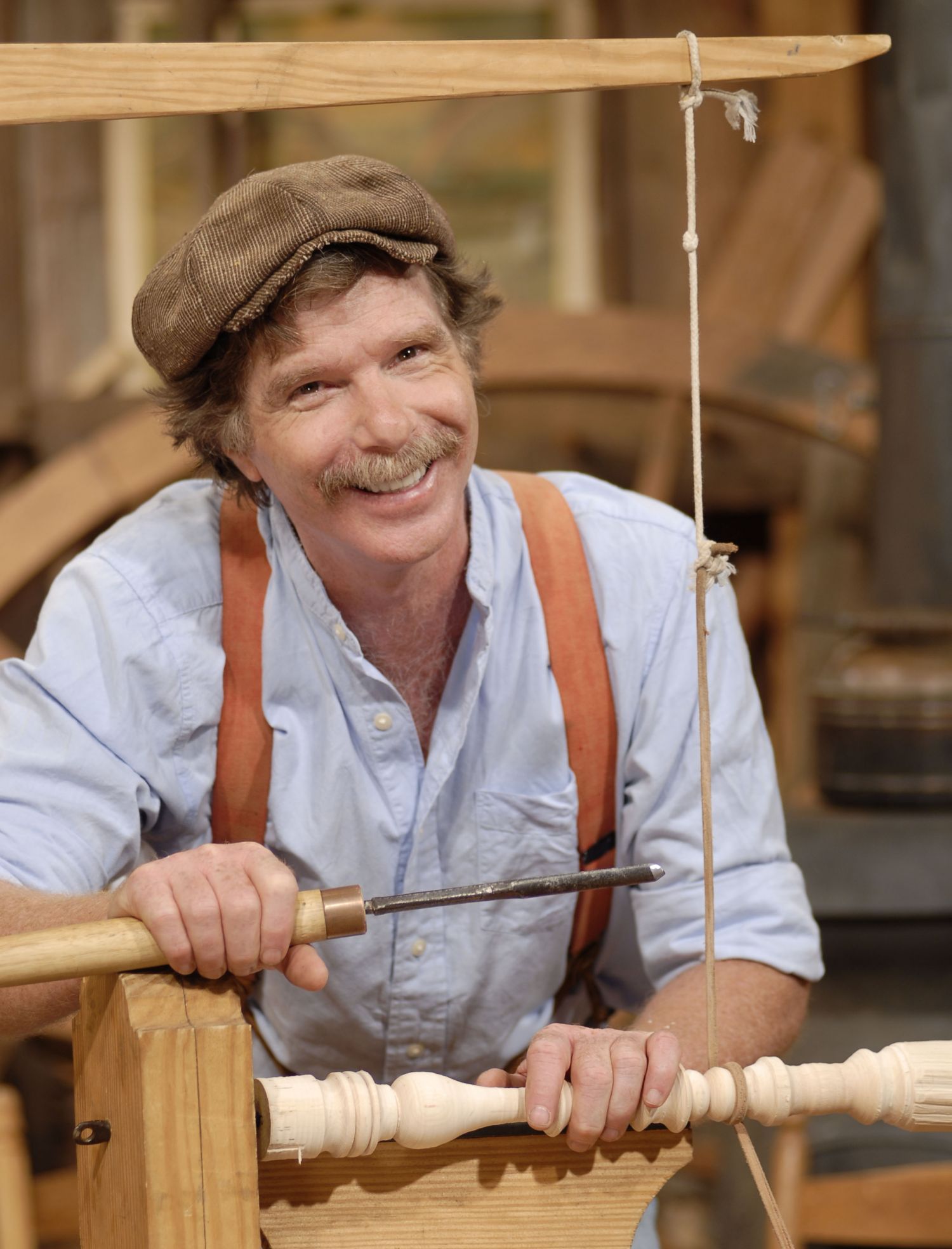
guest: i was at a garage sale. it was a digger garage sale which you justdig around through piles of junk. the gentleman asked me basically what i'mlooking for. i said pretty much anything old. he dug, i think, the cylinder up and broughtit out. he said, "would you be interested?" i said, "yeah, i love it." he said, "i think i have another one." he dug around, and he found the cone.
he asked $40, and i didn't argue one littlebit. i gave him the money. on the way out he said, "wait a minute, waita minute." he says, "i know i have another one," andhe brought out the sphere. he didn't ask for any more money. he said, "you already paid me," and down theroad i went. i cannot find anything on them. i don't know whether they're toys or teachingaids. i found both information online, so i haveno idea.
appraiser: you got it right on the teachingaids part. what these are, these are wooden models tohelp students learn in geometry about volume. these were invented in the latter part ofthe 19th century by a gentleman named albert kennedy. he was in rockport, indiana. the patent that albert kennedy filed in 1881was granted in 1883 for one of the objects, and then it went from there. these teaching tools were being distributedas late as 1917. by that point they were being more mass producedby a firm in chicago.
what you've brought us today, they're in thisbeautiful maple. they've got this great sculptural quality,and they have a decorative appeal on their own, but let's look at what they do as a teachingtool. i'm going to start with the cylinder closestto you. it comes in half, opens up. here's your cylinder that you brought us. you've got this great conical model that comesdown. it's very, very cool how they thought thisup. guest: it's amazing.
appraiser: the sphere is probably my favorite. it's definitely the largest. we can show, here's just opening up one sliceof it. then i think it's maybe at its best when youget it all the way open. it takes just a little bit of doing, and itfalls out. we get to this really wonderful star formation. again, it's another piece of sculpture now. guest: it's beautiful. appraiser: not only is it educational, butit's decorative.
we'll put it back together here. one more thing i think we need to talk aboutare these two metal objects here on the table with us. these are the covers that came with these. i think we're probably missing a second piece. this would have helped keep this in its shape. your $40 purchase is probably worth, and thisis a retail price, somewhere in the range of $1,500 to $2,000. guest: holy smokes.
are you kidding me? wow. they're not going anywhere.